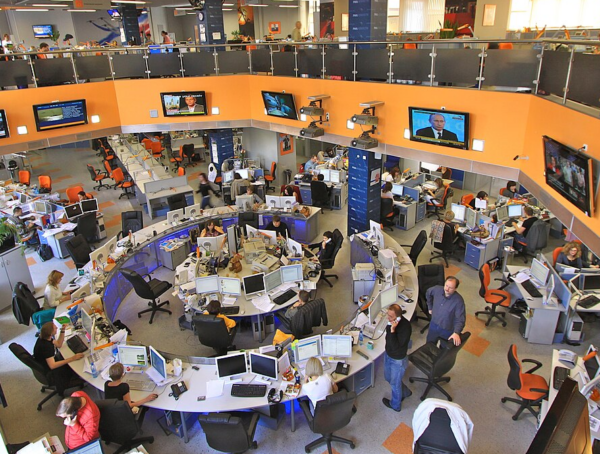Social media can help in the news production process by giving journalists access to a wealth of information — some from general followers, some from followers with large personal networks and some from organizations such as companies or nonprofits.
Tony Russell is a reporter for KJRH, a Scripps-owned NBC affiliate in Tulsa, Oklahoma. He uses social media throughout his workday and has seen the power of social platforms as a source of story ideas.
“A lot of people feel comfortable using social media to tip off reporters to stories because they feel that it is a safe medium. I have worked several investigative, exclusive stories through direct messages to my accounts. I’m able to take those stories and then vet them through my sources. I think that’s a win for the First Amendment because it allows more avenues for people to contact journalists and have us hold people accountable,” said Russell.
Patrick Ferrucci, assistant professor of journalism at the University of Colorado-Boulder, examined how the audience, through social media, influences journalists in the news production process.
The researcher conducted in-depth phone interviews with 53 working digital journalists to understand how they used social media and how it affected news processes. The journalists represented 49 organizations based in the United States, from large legacy outlets such as The New York Times to digitally native companies such as Buzzfeed and nonprofits such as The Texas Tribune.
The author found that the general audience affects news production in numerous ways. Every journalist discussed social media as a place where they can go to understand the motivations and thoughts of the people following them. Audience members can post comments. They can direct message or tweet at a journalist. When a journalist posts a question to their audience, the members can shape how or, in some cases, if a story will be told.
Social media has made gathering sources both easier and more democratic. For example, one journalist said, “I can find sources in about a 10th of the time than if I went looking for someone new in some other way. And I’m also not reliant on the same sources for every story. I can bring a host of voices into the news daily.”
When a piece is published, a journalist can track how the community reacts as a whole by looking at social media posts and comments relating to the story. And these posts and comments make a significant impact on how the journalist proceeds.
“Social media has helped the news media industry to be a little more empathetic,” Russell said. “If people feel like we’re glorifying an incident or a certain issue or sensationalizing something, that two-way conversation lets people say those things. Sometimes that feedback helps us to shape our stories in a good, sensitive, thoughtful way. In difficult stories that hit close to home for people, I watch social media to see if we’re being sensitive and respectful.”
The journalists in the study discussed social media users in two different ways: one, as merely nameless audience members who occasionally contribute to news production processes and, two, as audience members with large social networks and influence over the public. These opinion leaders could work for large organizations related to a specific field. They also could be “influencers” of the public, or they could simply be well known within the area the journalist works.
While journalists still make many decisions about story selection, sources and information used—nonprofessional actors have attained far more impact and power over news production processes than they had even a decade ago.
To read the full text of the study:
Ferrucci, P. (2018). Networked: Social media’s impact on news production in digital newsrooms. Newspaper Research Journal, 39(1), 6-17.








